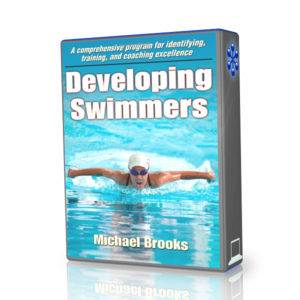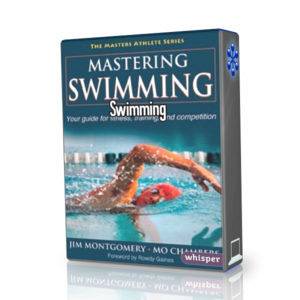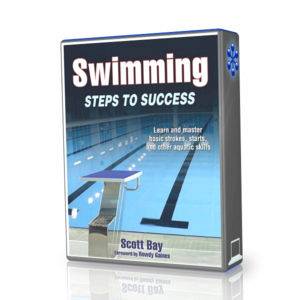Leverage makes the butterfly work. Using it is necessary to perpetuate the forward momentum of the stroke for any length of time. While the whole body, from the hands through to the feet works as a lever, high hips are crucial to benefiting from its effects. Leverage in butterfly works between the upper body and the hips, and, between the hips and the feet. The goal of the following leverage drills for butterfly is to learn to position the body to make the most of the leverage at each stage of the stroke.
Advanced One-arm Butterfly
THE PURPOSE OF THIS DRILL
- Maintaining a high hip body position
- Feeling the hips as the center of the butterfly
- Using leverage in the butterfly
HOW TO DO THIS DRILL
- Step 1 : - Push off the wall preparing to do the butterfly. Achieve a downhill float. Position your left arm at your side, while your right hand is extended in front of you. Perform a single butterfly stroke with your right arm, finishing quickly as your feet snap down, looking at the water in front of you as you inhale. Recover from the core, returning your face to the water and regaining your downhill position.
- Step 2 : - Do another stroke with the same arm, focusing on your hips. When you are in the downhill position at the beginning of the stroke, your hips should be high. When you are in the inhale position, your hips should still be higher than your feet, though lower than your head. During recovery, when you are returning to the downhill position, and as your upper body travels down and forward into the water, your hips remain high.
- Step 3 : - Continue your one- arm butterfly arm stroke, holding your hips high. Feel your upper body rise toward the end to the stroke. Feel it return to the downhill position at the end of the recovery. All the time your hips are high. Feel your feet snap down. Feel them rise. All the time your hips are high. Notice that your hips are the center of all the lever action in the stroke.
- Step 4 : - Keep practicing the one-arm butterfly with your left arm at your side. Maintain high hips and feel the lever action in the stroke. Use it to achieve the downhill float. Use it to accelerate your stroke. Use it to inhale. Use it to recover. Use it to carry momentum into the next stroke.
- Step 5 : - Continue to the far end of the pool. Switch arms and practice more.

DRILL FEEDBACK CHART
| Problem | Modification |
| My hips sink when I am breathing. | This is the position when your upper body is a bit higher than your hips, but in relation to your feet, your hips should still be high. Maintain a firm core and make sure you are not lifting your upper body too high out of the water to breathe. Look down at the water and keep your chin close to the surface of the water. |
| My hips are not higher than my chest at the start of the stroke. | Drop your chest down as your arms reach forward. Carry the momentum of your recovery forward and down into your extended position. Also make sure you are not over-bending at the knee when you dolphin. Doing so will weaken the lever effect when you are transitioning to the downhill position. |
| When I dolphin my hips get lower. | What should actually be happening is that the hips are high to start, then they get even higher as the feet snap down. They return to the original position, which is lower than when the feet snap down, but they are still high in relation to the body. |
No Kick Butterfly 96
THE PURPOSE OF THIS DRILL
- Achieving a dolphin without independent leg action
- Using leverage in the butterfly
- Powering the stroke from the core
HOW TO DO THIS DRILL
- Step 1 : - Push off the wall for the butterfly. Achieve a straight spine, firm core and high hips. Lean into a downhill float and stretch your arms for- ward. Stroke through, and breathe when your upper body reaches its highest point. Recover using your core to propel your arms forward. Roll your shoulders forward and drop your chest down to return your face to the water.
- Step 2 : - Do another stroke, maintaining a high hip position, but purposely do not kick. From the downhill position, accelerate through the sweep of the arm stroke as your upper body rises. Breathe at the high point of the stroke. Notice that your feet snap down as you finish the arm stroke and breathe anyway.
- Step 3 : - Recover, using your core to sweep your arms in a wide arch over the water. Return your face to the water as your chest drops, and your hands reach for the front. Notice that it is difficult to keep your feet from snapping down again after your chest drops into the water at the end of the recovery.
- Step 4 : - In fact, the kick, or foot motion in butterfly is a result of the other actions of the stroke. Try it again. Holding a high hip position, but without actively kicking, sweep through to the back of the stroke. Feel your feet snap down as your upper body and head rise. Using your core, chest and shoulders, recover as your face returns to the water. Feel your feet snap down again as you reach forward.
- Step 5 : - Continue doing the butterfly, producing a kick as a result of the actions of the rest of the stroke. Hold your core firm, and try to make your feet snap down with force, only through the other movements of the stroke. Practice to the far end of the pool. Rest, then practice again.

DRILL FEEDBACK CHART
| Problem | Modification |
| My feet don't snap down automatically. | Engage your core, and keep your spine straight. Without deliberately doing so, your lever will not work well, and your feet will not react to the other actions of the stroke. |
| When I don't kick, I can't breathe. | Maintain a high elbow position throughout the arm stroke, and finish the stroke with more speed. Press back on the water and avoid lifting it up at the finish. Doing so will pull you down into the water when it is time to breathe. |
| Without a kick, I am flat in the water. | Make sure your hips are high. Remember that they are the center of the stroke action. If they are not high, the leverage effect will be minimum. |
No Pause Fly
THE PURPOSE OF THIS DRILL
- Establishing rhythm from the core
- Maintaining momentum and leverage
- Avoiding damaging pauses in the stroke
HOW TO DO THIS DRILL
- Step 1 : - Push off the wall for the butterfly. Swim to the far end of the pool. Establish a rhythmic stroke, with evenly spaced kicks. If you aren't tired when you reach the wall, swim another length. As you reach the point where it is hard to maintain a rhythmic stroke, do a few more strokes, focusing on where in the stroke you lose your rhythm. Identify the point where your arms are when your rhythm breaks down.
- Step 2 : - Notice that it happens after the arm entry, when your arms are extended. As you get tired, the extension at the Y position becomes a glide. When the arms come to a stop in front, rhythm is lost. When rhythm is lost, momentum and leverage are lost as well.
- Step 3 : - Rest again. Now, push off the wall for the butterfly. Do only four strokes. Make each one a quick stroke. Focus on allowing no pause at the front of the stroke after your arms enter the water. Make a seamless transition from the recovery into the next stroke. Lay your hands on the surface of the water and grab hold of it. With your chest low in the water at this point, it should almost feel like you are reaching up with your hands.
- Step 4 : - Rest and try it again. Do four quick strokes, grabbing hold of the water the instant your reach the Y. With your chest low, anchor your hands in the water and vault your body forward over your hands. Actively involve your core in the transition to the next stroke.
- Step 5 : - Rest and then practice again. Achieve a chest-low position and reach into the Y. Kick and feel the power of that kick move through your body. Use it to advance into your next stroke with absolutely no pause. Without pausing at the front of the stroke, you carry valuable momentum into the next stroke. Continue practicing No Pause butterfly, gradually increasing the number of strokes you do in a row.

DRILL FEEDBACK CHART
| Problem | Modification |
| I don't feel like I am vaulting over my hands. | Make sure your elbows are straight and you achieve the Y position before starting the next stroke. Move your hands before your elbows. |
| I still have a pause at the front of my stroke. | Never stop your arm motion. Stretch forward then immediately sweep out and around. Actively space the down-beats of your dolphins to match the entry and the finish of your arm stroke. |
| I have a pause at the back of my stroke. | It could be that you are breathing as an independent action. If your head is rising too late, your arms will pause at the rear of the stroke. Let your breathing happen at the high point of the stroke. |







